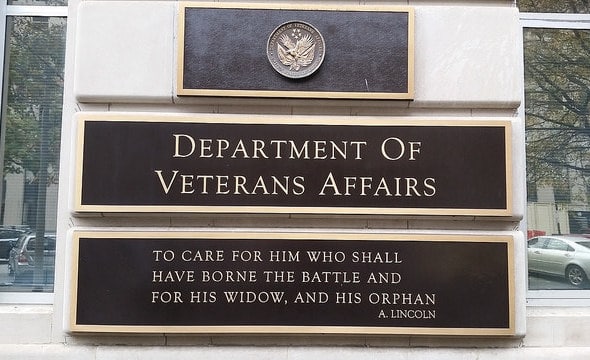Not every veteran disability looks like this:

Sandboxx has teamed up with our partners to help you smartly navigate your career transitions and avoid common pitfalls. Get helpful content, tailored for where you are in your military journey, each week in the Sandboxx app. Thank you to Team Sandboxx member Don for sharing his thoughts on transitioning veterans and VA benefits.
As service members exit active duty, most are faced with a seemingly uphill battle to receive the benefits earned during service to their country. I do not speak for all veterans here, but I think I can make a pretty accurate statement about the common sentiment regarding applying for disability benefits. “I’m not broken, or missing a limb. I don’t have a purple heart, or shrapnel in my body.”
A Sense of Independence
Most young men and women who join the military do so to begin a life of their own. Move away from the farm, gangs, or dead end small home town. For most it’s the first ever decision that they have actually made on their own. You own that decision. No one can make you join. That means you are making a huge leap into the mystical world of “Adulting.” A sense of pride and self-ownership of your life choices will never go away. This doesn’t change as you transition. You started your journey without any “help” from the government in the form or disability, why do you need it now.
My advice
We all see stories of homeless veterans struggling to find food or work. If those veterans had been receiving their benefits from the time they exited service, would they still be homeless now? That is an extreme representation of how your benefits can drastically improve your lifestyle as you exit your service to the country, but not an uncommon one. My advice is this:
Never feel bad for asking the government for something that was earned in blood, sweat, and tears.
I say all this because that is the way I viewed disability as I began my transition. I have provided for myself and my family ever since I left my father’s house en route to MCRD San Diego. I have never asked for a handout or help to pay any of my bills before. This is a common thinking process to our proud heritage of military service. We are strong and can provide for ourselves. I don’t need “The Man” to give me money to survive. I’ll figure it out. All of those are common beliefs among fellow veterans that I have served, and spoke with about receiving disability.
We have to stop thinking that way. I want to show you why receiving the disability you rate is just as important as finding your next career path.

Where to start in submitting your claim
The first step is to submit your claim to the U.S. Department of Veterans Affairs (VA). You can do that several ways. For me, there was an American Veterans (AMVETS) representative on my base, so that is who I used. I am not officially endorsing them, but they did a good job for me. The AMVETS rep asked me to get him my medical record, and then he told me start at the beginning of my career and list anything that has ever hurt because of anything military related. He then filed and submitted all the proper paperwork for my disability claim on my behalf to the V.A., free of charge. It was pretty painless for me.
There are two other ways I would recommend to go about starting your claim to the V.A. You can submit your claim right to the VA via there web portal. All the paperwork needs to be filled out and then submitted through their portal if you go that route. It can be a bit of an uphill battle doing all the work yourself there, so there is another organization I would recommend as well. The Disabled American Veterans (D.A.V.) is another great tool at your disposal. The have a pretty easy web page that you can navigate based on your branch. Then you can get contact info for one of their reps in your area to contact you.
Once your claim has been submitted you will probably want to learn two things about what your rating means, and why you were rated at what you were. If you haven’t done any math since high school (I might or might not be speaking about myself), than trying to decipher the Mayan calendar like table used for determining your rating might be a bit difficult. Lucky for you there are some great articles to help you navigate through this. (hidden in my funny ode to the mayans)
Not so simple
There are some issues that could arise that you need to be aware of that could either keep you from getting your disability all together for a period of time, or make you have a lower rating than what you think you rate. One of the more important things that you need to know as you transition is that if you accepted severance whether through voluntary or involuntary separation from the military it will affect, according the V.A., when you start to see your disability in your account. They call this “double dipping”, and has been debated for several years as unfair. The “double dipping” rule is still in place, and doesn’t look like it’s going away anytime soon. You can read more in the Military Times article which talks through a couple such scenarios.
Stay tuned
Stay tuned to this series if you want to:
- Develop your target career and fit
- Learn skills such as interviewing, networking and salary negotiation to help you achieve your career transition goals
- Be connected with civilian employers looking to hire Sandboxx veterans





